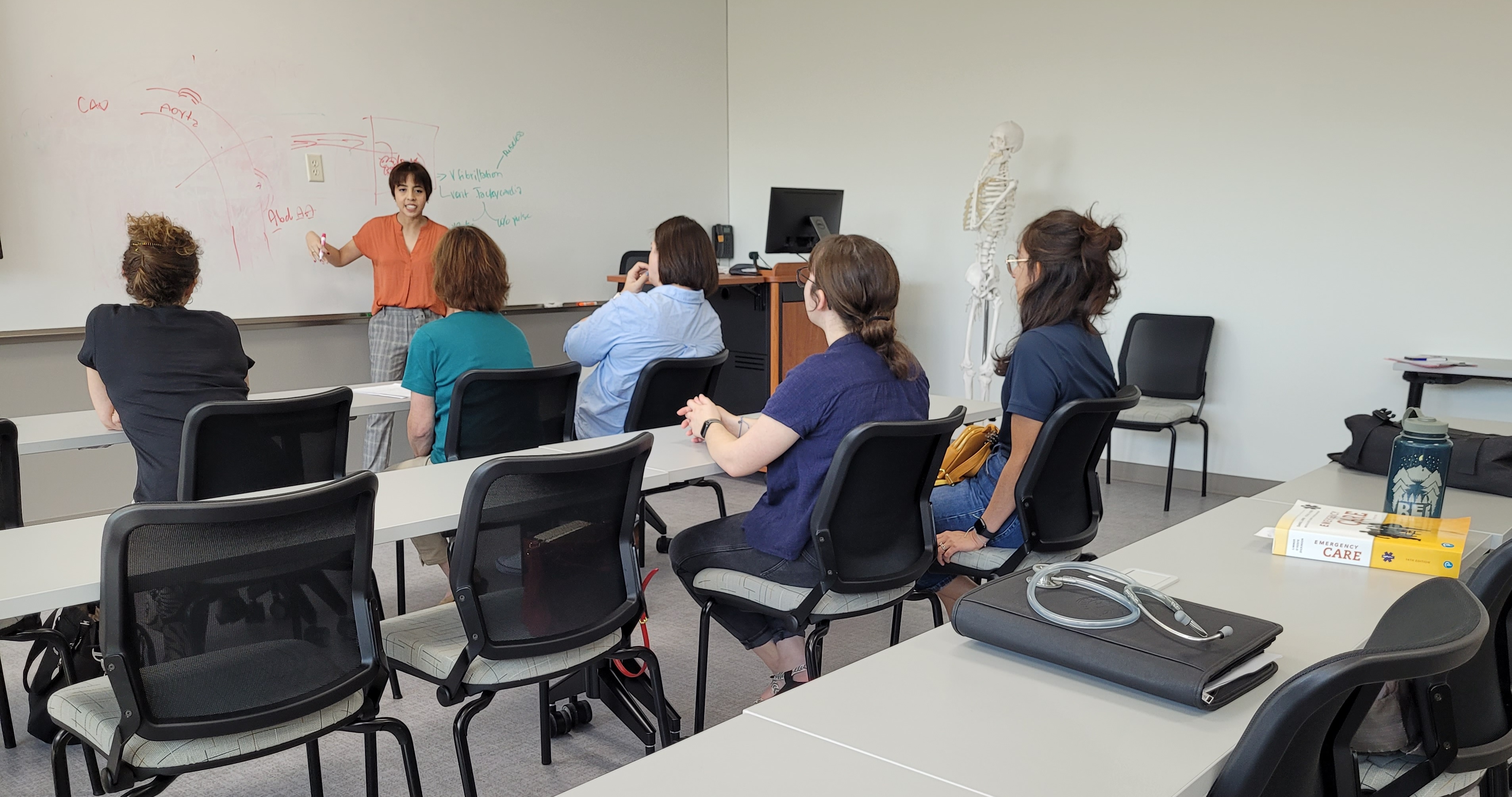
Mike Miller

by Limmer Education
Our articles are read by an automated voice. We offer the option to listen to our articles as soon as they are published to enhance accessibility. Issues? Please let us know using the contact form.
As EMS educators, we are tasked with more than just teaching skills and knowledge. We are responsible for shaping the future of emergency medical services, and a key part of that is fostering a supportive and inclusive learning environment. In a recent episode of the We Are EMS Educators podcast, Heather Davis, former program director at the UCLA Paramedic Program and current Director of Assessment at the UCLA School of Medicine, shared insightful strategies on how to create a positive classroom culture that empowers students to succeed. Here are some highlights.
Heather emphasized the need to create an environment where students feel they belong. In EMS, there has been a historical tendency to "eat our young," starting from the classroom. However, in today’s challenging landscape, where staffing EMS teams is harder than ever, it’s critical to shift this mentality.
Heather suggests, “If you don’t intentionally include, you will accidentally exclude.” As educators, we must be mindful of our behaviors, whether we are leading lectures or guiding hands-on skills practice. Every student should feel welcomed, supported, and capable of success.
If you don’t intentionally include, you will accidentally exclude.

A common challenge educators face is balancing support with maintaining high expectations. It’s important to set high standards for students while reinforcing the message that they are capable of meeting those expectations. The key is not lowering the bar but helping students overcome it.
Heather said that creating a culture of belief in their ability to succeed helps build their sense of self-efficacy, saying this:
You believe they can do it, and that’s communicated by setting high expectations and helping them get over the bar.
EMS students come from various backgrounds—some may have a fifth-grade reading level, while others may have advanced degrees. Meet students where they are and give each one the support they need to succeed.
A readiness program or paramedic prep program can be incredibly useful. At UCLA, they use a paramedic prep course to help students acclimate to the rigors of paramedic school, giving them an opportunity to engage with challenging material like EKG interpretation or anatomy before the high-pressure environment of paramedic school begins.
Heather shared a story about a high-achieving student who struggled during his field internship because he didn’t feel included in the station’s culture. He was relegated to sleeping on a cot next to a dog kennel, which sent a strong message that he didn’t belong. This lack of support affected his confidence and performance.
This story underscores how critical it is for educators to support their students, not just academically but emotionally. Creating a “nest” where students feel they can return, ask questions, and seek guidance can make all the difference in their journey toward becoming successful EMS providers.
In the EMS field, isolation during internships can negatively affect student performance and morale. Heather advocates for bringing students back together during their field rotations to share experiences, normalize challenges, and foster a sense of camaraderie. Whether through national registry practice days or informal check-ins, allowing students to reconnect with their peers and instructors is invaluable.
EMS educators are often resistant to change. Here at Limmer Education, we’ve heard plenty of educators say, “I’ve been doing it this way for years, I don’t think I can change.” But change is an opportunity for growth and improvement. Small, iterative changes—whether incorporating new technology or adjusting teaching strategies—can make a big difference in student outcomes.
Heather’s approach to EMS education is built around a powerful philosophy: “42 in, 42 out.” The goal is that every student who starts the program has the support and resources to complete it successfully. While it’s not always possible to achieve a 100% pass rate, aiming for it ensures that every student feels valued and supported throughout their journey.
By fostering a positive, inclusive, and supportive classroom environment, EMS educators can make a profound difference in the lives of their students and, ultimately, in the communities these students will serve.
As an EMS educator, how do you create a positive classroom environment for your students? Share your experiences in the comments below or connect with us on social media to continue the conversation!

Mike Miller

Limmer Education

Limmer Education